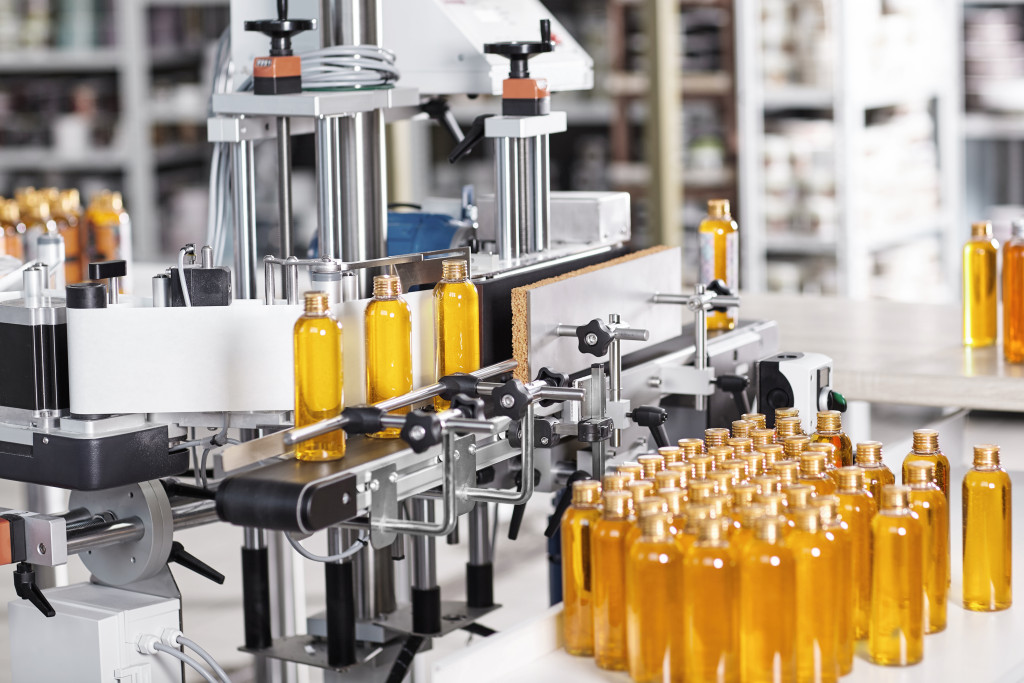• Automation can help streamline production, reduce labor costs, and increase accuracy in factories.
• Technologies such as air compressor intake filters and predictive analytics can improve machine maintenance.
• IoT devices can be used to monitor equipment, detect defects, optimize the supply chain, and enhance safety.
• Leveraging technology can help factories increase production output and profits while reducing costs.
Technology is an integral part of today’s industrial manufacturing processes. From robots to 3D printing, factories are experiencing a new era in efficiency and productivity. More and more companies are turning to technology for solutions that can help them streamline their processes and increase production output.
This blog post will explore the ways technology can be used to improve your factory processes.
1. Streamline Production with Automation
Automation is one of the most potent tools factory owners have. Automation can help streamline production by allowing machines to take on more complex, labor-intensive tasks that would otherwise require significant human capital. For example, robotic arms can be programmed to perform repetitive processes such as welding or assembly with greater precision than human workers. This increases accuracy, reduces the time needed for a task, and allows for more efficient use of resources.
Additionally, automation can reduce costs associated with hiring additional labor and materials. Because the machines are programmed to complete a task quickly and accurately, the need for additional personnel is greatly minimized. As a result, factory owners can save money on wages and other overhead costs. They can also use materials more efficiently, eliminating the need to purchase large quantities of parts that could go unused.

2. Improve Machine Maintenance
As machines age, they require more frequent maintenance and repairs. This can take up valuable time and money. Fortunately, various technologies can help factory owners keep their machines running efficiently and effectively. For one, devices that need compressed air to function can be outfitted with an air compressor intake filter to keep the air pressure consistent. This eliminates the need for the machine to restart itself or require manual adjustments constantly.
Another technology that can help with machine maintenance is predictive analytics. By leveraging data collected from sensors, predictive analytics can help predict when a machine will likely break down, allowing factory owners to take action before the problem develops into something more serious and costly.
3. Enhancement Through Connectivity
The Internet of Things (IoT) has opened up a whole new world of possibilities for improving factory processes. IoT devices collect data from various sources within the factory and transmit it back to a central control system, where AI algorithms analyze it in real-time and monitor performance metrics such as speed and efficiency. This data helps managers make informed decisions about optimizing production while reducing downtime due to maintenance issues or equipment failure. Here are some of the best uses for IoT:
a. Automated Equipment Monitoring
IoT devices such as PRTG OPC UA server can monitor machines’ real-time performance, allowing quicker response times and better decisions about when to shut down or repair equipment. Some machines can even be programmed to shut down when a problem is detected automatically.
b. Remote Monitoring and Alerts
A factory owner can use the internet to connect their machines and receive alerts when something goes wrong. This makes it much easier to know when a machine needs maintenance or repairs and allows for proactive repairs that can save time, money, and resources.
c. Enhanced Quality Assurance
IoT-enabled sensors can be used to detect defects or abnormalities in the factory’s processes. While manual inspections are still necessary, IoT-enabled sensors can detect problems quickly and accurately.
d. Optimization of Supply Chain
Tracking and monitoring the entire supply chain, from raw materials to finished products, can help factory owners optimize their processes. Many IoT devices can be used to track and monitor the supply chain, allowing for better decisions about production schedules and inventory management.

4. Enhanced Safety
Technology can also be used to improve safety in factories. Automation and robotics can help reduce the need for manual labor in hazardous environments, while sensors can detect unsafe conditions before they become a problem. Additionally, IoT-enabled wearables can be used to monitor workers’ health in real-time and alert them to potential health risks.
In today’s competitive environment, technology is essential for businesses seeking an edge over their competitors in terms of efficiency and cost savings. Streamlining production with automation, improving machine maintenance, and leveraging the power of connectivity through IoT can help factories run more efficiently and safely. By taking advantage of these technologies, factory owners can increase their production output and profits while reducing costs.





